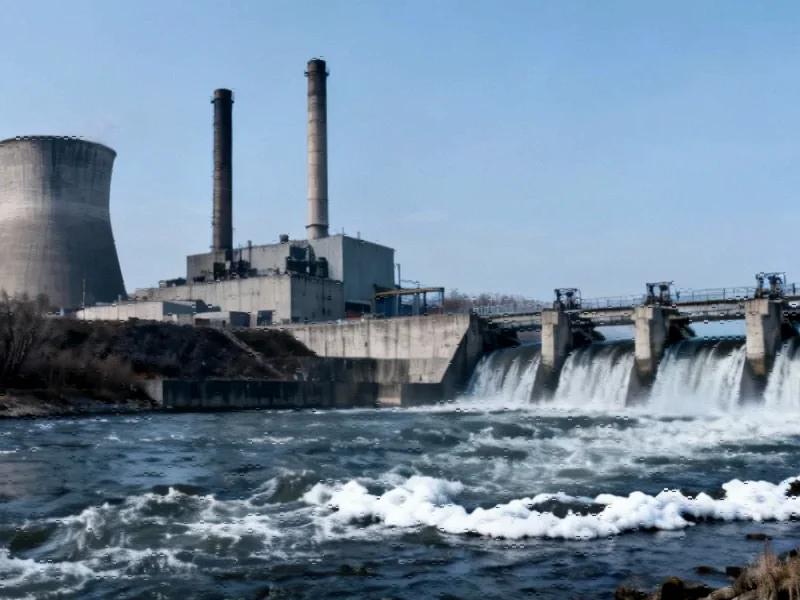The Maritime Industry’s Clean Fuel Challenge
The global shipping industry faces an unprecedented decarbonization challenge, responsible for approximately 3% of worldwide greenhouse gas emissions. As international regulations tighten and environmental concerns mount, the search for viable alternative fuels has become increasingly urgent. Among the various options being explored, ammonia has emerged as a particularly promising candidate due to its carbon-free composition and existing transportation infrastructure.
Table of Contents
- The Maritime Industry’s Clean Fuel Challenge
- APOLO’s Innovative Approach to Ammonia Power
- The Science Behind Ammonia Cracking
- Dual Power Pathway Implementation
- Overcoming Technical Hurdles
- Market Impact and Scalability
- Comprehensive Assessment and Regulatory Alignment
- Current Progress and Future Outlook
APOLO’s Innovative Approach to Ammonia Power
The APOLO project represents a significant leap forward in maritime energy conversion technology. Unlike conventional approaches that focus on single power solutions, APOLO’s breakthrough lies in developing a flexible fuel supply system that can serve both fuel cells and internal combustion engines interchangeably. This dual-capability system addresses one of the major hurdles in maritime decarbonization – the need for adaptable solutions across different vessel types and operational requirements.
At the heart of APOLO’s technology is a compact membrane reactor that efficiently converts ammonia into hydrogen through a process called cracking. What makes this system particularly innovative is its ability to produce either a hydrogen-nitrogen mixture suitable for combustion engines or high-purity hydrogen for fuel cells, all from the same compact unit. This flexibility is crucial for the maritime sector’s diverse needs., as comprehensive coverage
The Science Behind Ammonia Cracking
Ammonia cracking is essentially the reverse of the well-known Haber-Bosch process used for ammonia synthesis. The chemical reaction (2NH₃ ↔ 3H₂ + N₂) requires careful temperature and pressure management due to its endothermic nature. Traditional industrial cracking systems operate at extremely high temperatures (800-900°C), making them impractical for shipboard use due to energy requirements and safety concerns., according to recent innovations
APOLO’s solution employs palladium-based catalytic membrane reactors that achieve complete ammonia conversion at significantly lower temperatures (400-450°C). The secret lies in the membrane’s exceptional hydrogen selectivity – with an H₂/N₂ perm-selectivity exceeding 100,000 at 425°C. This means hydrogen is separated almost immediately as it’s produced, driving the reaction toward completion while maintaining lower operating temperatures., according to industry analysis
Dual Power Pathway Implementation
The project’s most compelling feature is its development of two parallel power conversion pathways:
- Fuel Cell Integration: For vessels requiring high efficiency and zero local emissions, the system produces fuel-cell grade hydrogen meeting ISO 14687:2019 standards. Partners including Corvus Energy and Nuvera are testing these systems under various pressure conditions.
- Internal Combustion Engine Adaptation: For vessels transitioning from conventional engines, the system provides an optimized NH₃/H₂ mixture that addresses ammonia’s challenging combustion characteristics. The Large Engine Competence Centre leads this research, focusing on ignition optimization and emissions control.
Overcoming Technical Hurdles
One of the major challenges in ammonia-based power systems has been managing residual ammonia contamination, which can severely damage fuel cells. APOLO addresses this through innovative sorbent materials developed by Johnson Matthey that polish the hydrogen stream to remove trace ammonia. Additionally, the system incorporates sophisticated heat integration, using engine exhaust to provide thermal energy for the cracking process, thereby improving overall efficiency., according to industry developments
The project also tackles nitrogen oxide (NOx) emissions through advanced selective catalytic reduction systems using copper, iron, and vanadium-based catalysts. This comprehensive approach ensures that the solution doesn’t simply shift environmental impacts from carbon to nitrogen compounds., according to further reading
Market Impact and Scalability
APOLO’s technology targets the first 30,000 vessels suitable for ammonia conversion, initially focusing on ships with 1-10 MW propulsion systems. With numerous vessels in the 3 MW range expected to adopt alternative fuels within the next decade, the timing aligns perfectly with industry transition timelines. The modular design ensures scalability across different vessel sizes and types, from coastal freighters to larger commercial vessels.
Comprehensive Assessment and Regulatory Alignment
Beyond technological development, APOLO incorporates thorough techno-economic analysis and life cycle assessment conducted by Chalmers University. Safety protocols inspired by HAZOP/HAZID methodologies ensure that the systems meet rigorous operational standards. The project also works with Bureau Veritas to propose regulatory amendments that will facilitate ammonia’s adoption as a maritime fuel.
Current Progress and Future Outlook
Currently in its 21st month, APOLO remains on schedule with key component development for membrane reactors, fuel cells, and ammonia engines. The consortium has already conducted market analysis and developed preliminary exploitation strategies, positioning the technology for rapid deployment once development concludes.
As the maritime industry races to meet targets set by FuelEU Maritime, Fitfor55, and the European Green Deal, technologies like those being developed in APOLO offer practical pathways to meaningful emissions reduction. The project represents not just a technical achievement, but a crucial step toward sustainable shipping that balances environmental responsibility with operational practicality.
The APOLO project demonstrates how coordinated research and development can transform challenging environmental mandates into achievable technical solutions, potentially revolutionizing how we power global shipping while significantly reducing its carbon footprint.
Related Articles You May Find Interesting
- Cooler Master Reinvents CPU Cooling with 3DHP Heatpipe Technology
- UK’s Post-Brexit Reckoning: Why EU’s Priorities Leave Britain’s Hopes in Limbo
- Former God of War Executive Calls for Industry Shift from Spectacle to Core Game
- Europe’s Green Steel Ambitions Hang in Balance as Stegra Navigates Financial Pre
- Asset Management Giants Rewrite Playbook as French Debt Faces Downgrade Pressure
References & Further Reading
This article draws from multiple authoritative sources. For more information, please consult:
This article aggregates information from publicly available sources. All trademarks and copyrights belong to their respective owners.
Note: Featured image is for illustrative purposes only and does not represent any specific product, service, or entity mentioned in this article.



